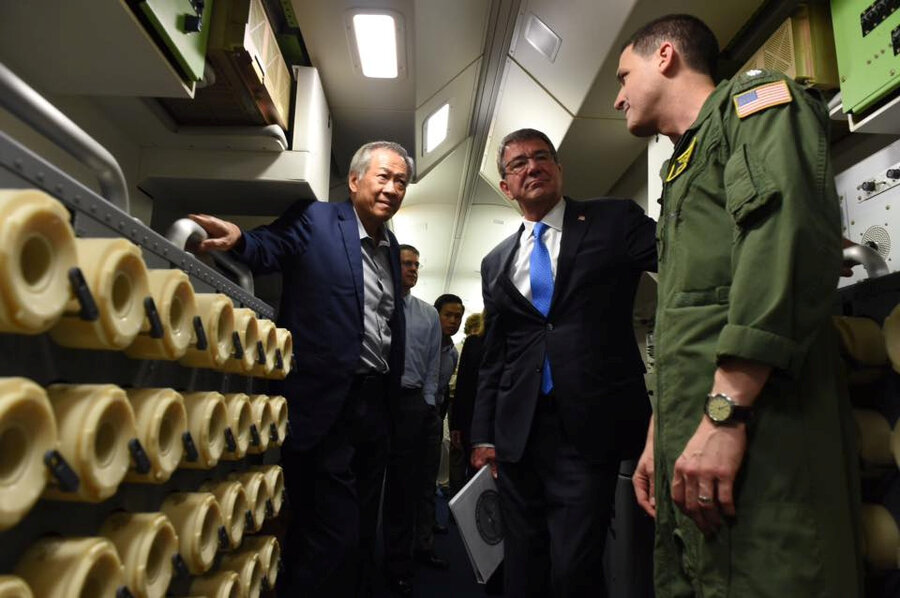Pentagon aims to spark innovation by looking outside the beltway
The Pentagon is setting up outposts in innovation centers outside its Washington headquarters to give US warfighters better technology when confronting enemies — whether in cyberspace or on the physical battlefield.
That's critical for maintaining the military's edge moving forward, said Secretary of Defense Ashton Carter on Tuesday at the opening of the initiative's Boston office.
"Our military’s excellence is not a birthright. It’s not a guarantee. And we can’t take it for granted in the 21st century," said Mr. Carter. “We have to earn it again and again. And today, it’s imperative we do so, because we live in a changing and competitive world."
The program known as the Defense Innovation Unit Experimental (DIUx) is part of a larger push to speed up innovation within the Department of Defense (DOD) and build new connections to researchers, academics, and entrepreneurs who are at the bleeding edge of technology.
Earlier this year, the Pentagon opened a similar office in Mountain View, Calif., on the doorstep of Stanford University and in the heart of Silicon Valley. The Boston office is situated next to the Massachusetts Institute of Technology, which has a long tradition of advanced research for the military.
The Pentagon's tech-hub outposts are meant to streamline the process for working with technologists or startups and eventually deploying new products or techniques for soldiers, sailors, airmen, and marines.
"We're taking a page straight from the Silicon Valley playbook," Carter said at the opening of the Pentagon's California outpost.
That approach was also evident in the way that the Pentagon reached out to cybersecurity researchers for its recently concluded bug bounty program, which was a first for the federal government. It also underscored how the Department of Defense can learn from tech companies and the importance the agency places on securing its networks, Carter said Tuesday.
"There's no point in having all this military equipment if it can't be networked," he said.
Increasingly, the government needs to partner with tech companies and security researchers to stem the flood of data breaches and get a hold on the nation’s cybersecurity, says Juliette Kayyem, a lecturer in international security at Harvard University's Belfer Center for Science and International Affairs.
"The days of building weaponry are not gone," said Ms. Kayyem. "But the threats we face that have impact our defense – cyber, terrorism, even climate change — can't be addressed solely by government programs."
Indeed, said Jeffrey Caton, president of the national security and cyberspace company Kepler Strategies, the Pentagon's new innovation outposts are a "shot in the arm" for reinvigorating the kinds of military advancements necessary for defending the US in the Digital Age.
“A lot of the defense companies ... have been shutting down their research and development — their seed corn, if you will — because it wasn't showing any hopes of profit,” said Mr. Caton.
While Carter highlighted the importance of bolstering cyberdefenses, the Boston office will chiefly focus on biotechnologies for troops. "We know it can have a tremendous impact on the health and welfare of our troops."





